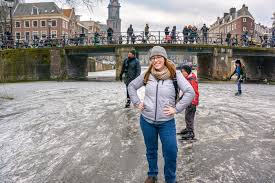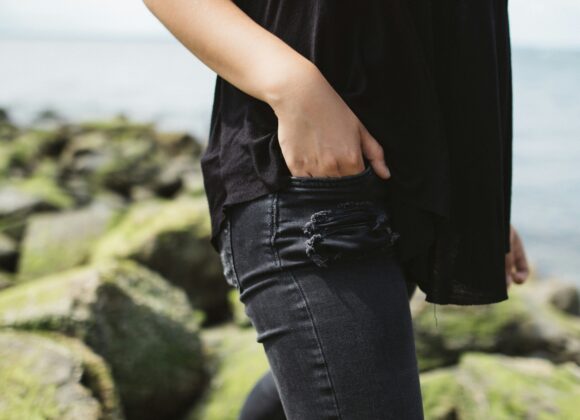🇳🇱 Introduction: Dressing for Dutch Life
Planning a trip to the Netherlands? Whether you’re strolling through tulip fields, cycling along canals, or exploring the vibrant streets of Amsterdam, knowing what to wear is essential. Dutch fashion is a blend of practicality, minimalism, and effortless style. Locals dress for the weather, the bike, and the occasion—with a strong emphasis on comfort and sustainability.
In this guide, we’ll explore seasonal clothing tips, local fashion culture, and how people dress in Amsterdam. We’ll also highlight Dutch clothing brands and offer packing advice to help you blend in like a local.
🌦️ Understanding the Dutch Climate
Before diving into fashion, it’s important to understand the climate. The Netherlands has a temperate maritime climate, which means mild summers, cool winters, and frequent rain throughout the year. The weather can change quickly, so layering is key.
Spring (March–May)
- Temperature: 5°C to 15°C
- What to wear: Light jackets, waterproof layers, jeans, and sneakers. A scarf and umbrella are smart additions.
- Style tip: Opt for breathable fabrics like cotton and denim. Dutch spring fashion leans toward neutral tones and relaxed fits.
Summer (June–August)
- Temperature: 15°C to 25°C
- What to wear: Casual dresses, shorts, linen shirts, and sunglasses. Evenings can be cool, so pack a light sweater or jacket.
- Style tip: Dutch summer style is laid-back. Think minimalist sundresses, white sneakers, and crossbody bags.
Autumn (September–November)
- Temperature: 10°C to 18°C
- What to wear: Trench coats, boots, cozy knits, and scarves. Rain gear is essential.
- Style tip: Earth tones dominate. Layering is common—think turtlenecks under blazers or sweaters over dresses.
Winter (December–February)
- Temperature: 0°C to 8°C
- What to wear: Warm coats, gloves, waterproof boots, and thermal layers.
- Style tip: Dutch winter fashion is functional but stylish. Wool coats, chunky scarves, and beanies are popular.
🚲 How Do People Dress in Amsterdam?
Amsterdam is the fashion capital of the Netherlands, known for its effortlessly cool street style. The city’s fashion scene is a mix of urban edge, Scandinavian minimalism, and eco-conscious choices.
Key Elements of Amsterdam Style:
- Neutral Palette: Black, gray, navy, and beige dominate.
- Layering: Locals master the art of layering—hoodies under trench coats, turtlenecks under blazers.
- Footwear: Comfortable shoes are a must. Stylish sneakers, ankle boots, and loafers are common.
- Denim: Jeans are a staple—skinny, straight-leg, or wide-leg.
- Accessories: Minimalist bags, sunglasses, and scarves add personality.
Biking Fashion
Since cycling is the primary mode of transport, Amsterdam fashion is bike-friendly:
- Avoid long, flowing garments that can get caught in wheels.
- Opt for crossbody bags or backpacks.
- Choose shoes that are easy to pedal in.
🛍️ Netherlands Clothing Brands to Know
Dutch fashion is known for its sustainability, quality, and timeless design. If you want to shop local or understand the fashion culture better, here are some standout brands:
1. Scotch & Soda
- Style: Eclectic prints, premium basics, and tailored pieces.
- Why it’s popular: Amsterdam-based brand that blends vintage and contemporary styles.
2. G-Star RAW
- Style: Urban denim and streetwear.
- Why it’s popular: Known for innovative denim and sustainable practices.
3. Kings of Indigo
- Style: Vintage-inspired, eco-friendly fashion.
- Why it’s popular: Combines American workwear with Japanese aesthetics.
4. Studio JUX
- Style: Ethical fashion with a minimalist edge.
- Why it’s popular: Focuses on fair trade and sustainable materials.
5. Daily Paper
- Style: Afro-centric streetwear.
- Why it’s popular: Celebrates African heritage with bold designs and global appeal.
🧳 Packing Tips for Travelers
Packing for the Netherlands requires a balance of style and practicality. Here’s a checklist to help you prepare:
Essentials:
- Waterproof jacket or trench coat
- Comfortable walking shoes or sneakers
- Layers: sweaters, hoodies, and long-sleeve shirts
- Jeans or trousers
- Scarf, gloves, and beanie (for colder months)
- Umbrella or rain poncho
- Sunglasses and sunscreen (for summer)
Optional:
- Dressy outfit for dining out
- Backpack or crossbody bag
- Workout clothes for biking or hiking
- Swimsuit (for spa visits or beach trips)
Pro Tip:
Pack wrinkle-resistant fabrics and avoid high heels or bulky items. The Dutch walk and bike a lot, so comfort is key.
🧠 Cultural Insights: Fashion and Identity
Fashion in the Netherlands is more than just clothing—it’s a reflection of values. Dutch people value authenticity, sustainability, and functionality. You’ll rarely see flashy logos or overly trendy outfits. Instead, expect timeless pieces, clean lines, and thoughtful details.
Sustainability Matters
The Netherlands is a leader in sustainable fashion. Many locals shop secondhand, support ethical brands, and prioritize quality over quantity.
Gender-Neutral Fashion
Dutch fashion is inclusive and progressive. Gender-neutral clothing is widely accepted, and many brands offer unisex collections.
Modesty and Practicality
While Dutch fashion is stylish, it’s also modest. Revealing outfits are less common, especially in everyday settings. Practicality often trumps glamour.
🏙️ Regional Differences in Style
While Amsterdam sets the tone for Dutch fashion, other cities have their own flair:
Rotterdam
- Edgier and more experimental.
- Influenced by architecture and art.
Utrecht
- Classic and academic.
- Popular among students and professionals.
The Hague
- Sophisticated and formal.
- Home to diplomats and government officials.
🧵 Shopping in the Netherlands
If you’re looking to shop during your visit, here are some popular destinations:
Amsterdam
- De Negen Straatjes (Nine Streets): Boutique shopping in the canal district.
- Kalverstraat: Main shopping street with global brands.
- Haarlemmerstraat: Trendy shops and local designers.
Rotterdam
- Lijnbaan: Modern shopping area.
- Meent: High-end fashion and concept stores.
Utrecht
- Hoog Catharijne: Large indoor mall.
- Twijnstraat: Independent shops and vintage finds.
🧭 Dressing for Dutch Activities
Your wardrobe should match your itinerary. Here’s how to dress for popular Dutch experiences:
Canal Tours
- Casual layers and sunglasses.
- Windbreaker or light jacket.
Museum Visits
- Smart-casual attire.
- Comfortable shoes for walking.
Biking
- Athletic wear or fitted jeans.
- Avoid long coats or skirts.
Beach Trips (e.g., Scheveningen)
- Swimsuit, cover-up, and sandals.
- Light sweater for breezy evenings.
Nightlife
- Trendy but understated.
- Dark jeans, boots, and a stylish top.
🧭 What Not to Wear
To avoid standing out as a tourist, here are a few things to skip:
- High heels: Impractical for cobblestone streets and biking.
- Loud logos or flashy outfits: Dutch fashion is subtle.
- Bulky backpacks: Opt for sleek crossbody bags.
- Overly formal wear: Unless attending a special event, keep it casual.
🧑🎓 Student Style in the Netherlands
If you’re studying abroad or visiting universities, student fashion is relaxed and functional:
- Hoodies, jeans, and sneakers are common.
- Tote bags and backpacks are popular.
- Many students wear secondhand or thrifted clothing.
🧘 Wellness and Fitness Fashion
Dutch people are active and health-conscious. You’ll see plenty of athleisure wear:
- Leggings, joggers, and performance fabrics.
- Neutral colors and minimalist designs.
- Brands like Nike, Adidas, and local labels.
🧑💼 Business Attire in the Netherlands
If you’re traveling for work, here’s what to expect:
- Business casual is the norm.
- Blazers, trousers, and smart shoes.
- Avoid overly formal suits unless required.
🧵 Final Thoughts: Dress Like a Local
Dressing for the Netherlands means embracing comfort, style, and sustainability. Whether you’re exploring Amsterdam or venturing into the countryside, your wardrobe should reflect the Dutch ethos: practical, polished, and authentic.
By understanding how people dress in Amsterdam and across the country, you’ll not only feel confident but also connect more deeply with the local culture.




